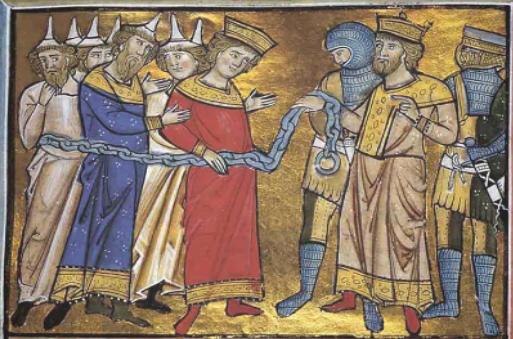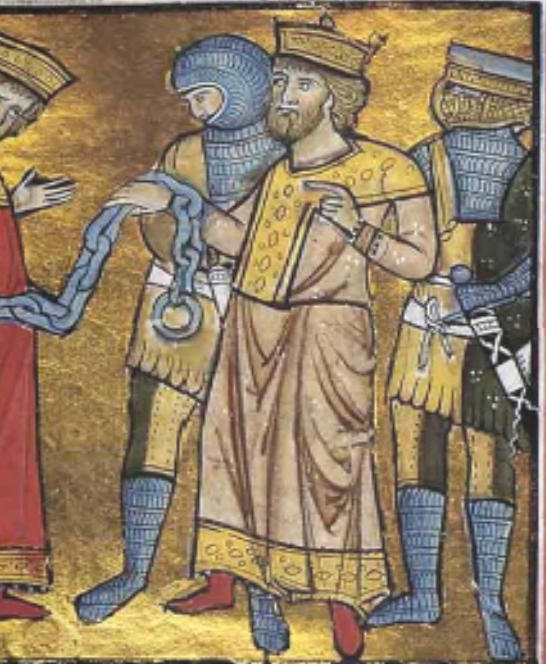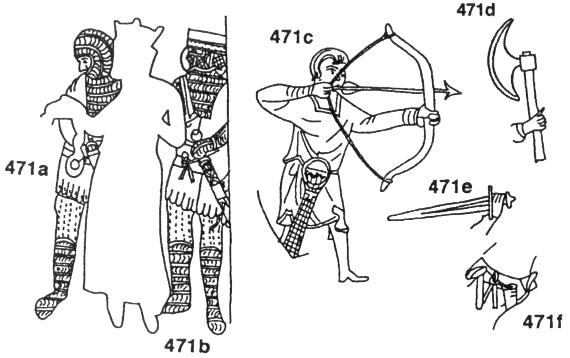

St. Elizabeth’s Psalter
S. VI in.; parchment; mm 300 × 255; ff. III, 270, III’.
One of first de luxe Psalters manufactured for the high lay aristocracy in a German milieu, most likely in the monastery of Reinhardsbrunn, around the years 1201-1208, under the patronage of
Herman I, landgrave of Thuringia, and his second wife, Sophia of Wittelsbach, the codex consignee.
Source: Cividale del Friuli, National Archaeological Museum, Archives and Library, codex CXXXVIII image 109
Elisabethpsalter
Folio: 139v, Exile of the King to Babylonia
From: Germany (exact location unknown)
Holding Institution: Museo Archeologico Nazionale
Source: Elisabethpsalter
Referenced on pp.182-3, Arms and Armour of the Crusading Era, 1050-1350, Western Europe and the Crusader States by David Nicolle.
471A-F Psalterium B. Elisabeth, Thuringia (?), early 13th century
(Museo Archeologico Nazionale, Cividale Ms. CXXXVII, Cividale, Italy)

A-B - f.139v; C - f.lv; D - f.6; E-F - f.4v.
This particular psalter illustrates a number of features that are interesting not only for the weapons they show but for the light they might shed on warfare in Thuringia and neighbouring Saxony.
This region has been known for its effective levy of peasant archers in the early medieval period.
An archer using either a longbow or a large form of flat-bow (C) appears in the Psalterium B. Elisabeth.
The quiver that hangs at his belt is slightly more sophisticated than normally seen in 13th-century Western Europe.
This, plus the crescent-bladed arrows that are held points uppermost in the quiver, might point to a large degree of Eastern influence on Thuringian archery via the Slavs.
Two armoured figures are unlike most other 13th-century German warriors since they wear short, tight-fitting tunics with decorative lower edges (A and B).
These might be padded gambesons. The men certainly have padded cuisses over their thighs and knees with mail chausses worn beneath.
Their mail coifs appear to be separate from their long-sleeved hauberks and to have squared lower edges.
One man (B) also wears an early form of decorated great helm.
Swords have long straight quillons and are carried from knotted sword-belts.
The Calendar folios, 'Psalterium B. Elisabeth' or 'Elisabethpsalter', Thuringia, 1201-1208AD. Museo Archeologico Nazionale, Cividale Ms. CXXXVII, Cividale, Friuli, Italy.
|


